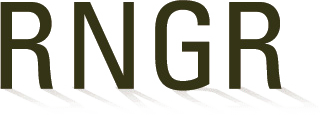
Anisacanthus (thurberi)
|
Allegra Mount Seed Lab Manager Borderlands Restoration PO Box 1191 Patagonia, Arizona 85624 949-690-2592 borderlands.restoration@gmail.com www.borderlandsrestoration.org |
| Family Scientific Name: | Acanthaceae | ||
|---|---|---|---|
| Family Common Name: | Acanthus Family | ||
| Scientific Name: | Anisacanthus thurberi (Torr.) A. Gray | ||
| Common Name: | Thurber's desert honeysuckle | ||
| Ecotype: | Madrean Archipelago | ||
| General Distribution: | Rocky canyon bottoms and gravelly or sandy washes from 2,000–5,000 ft (610–1524 m); blooms March–June, rarely in Fall (October–November). | ||
| Propagation Goal: | Plants | ||
| Propagation Method: | Vegetative | ||
| ProductType: | Container (plug) | ||
| Propagule Collection: | Plants are propagated from seed and cuttings. Seed is wild-collected from adjacent public and private lands using protocols that ensure population integrity and genetic diversity. The collection window is determined by phenological monitoring and seed is collected at the time of natural dispersal. This seed was collected between the end of June to end of July. Softwood and semi-hard cuttings are taken from nursery stock or wild material. Cuttings were taken from nursery stock at any time of the year when the plants were active. Wild cuttings are taken during the active vegetative growth season during the SW monsoons (July-Sept), and transported to the nursery between wet newspaper, sealed in plastic bag, in a cooler. Cuttings are processed as soon as possible. | ||
| Propagule Processing: | Seeds were dried, cleaned, and stored in sealed plastic at 40° F until propagation. | ||
| Pre-Planting Treatments: | No seed treatment is necessary. Although the seed was uniformly damaged by bugs (capsules seem to be a preferred housing for a type of grub), it did not appear to affect germination and we therefore assume the embryo wasn't affected by the presence of the insect. | ||
| Establishment Phase: | Starting media for cuttings is a 2:1 mix of perlite and cocohusk. Success rate of vegetative (cuttings) propagations ranged from 29% to 94%, average 60%. Hormone used was brand DipnGrow at 10x-20x dilutions. Transplant media and germination media for seed is nursery potting soil (high drainage native plant soil mixture, high sand & perlite/cinderstone content). Germination success was 60%. Final pot size is 4" wide by 10" deep treepot; final size achieved after 4 months of growth. | ||
| References: |
Borderlands Restoration Network (2018). BRN Native Plant Materials Program Database. Unpublished Raw Data. |
||
Citation:
Claverie, Francesca; Allen-Cantu, Juniper; McNelis, Perin; Mount, Allegra. 2018. Propagation protocol for production of Container (plug) Anisacanthus thurberi (Torr.) A. Gray Plants Borderlands Restoration Patagonia, Arizona. In: Native Plant Network. URL: https://NativePlantNetwork.org (accessed 2025/11/02). US Department of Agriculture, Forest Service, National Center for Reforestation, Nurseries, and Genetic Resources.



